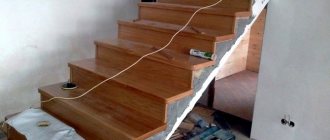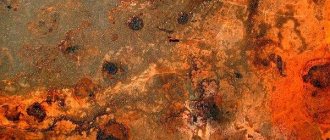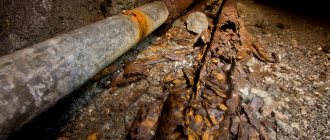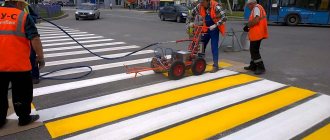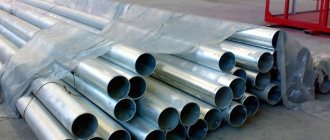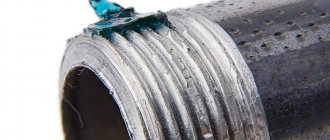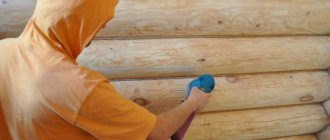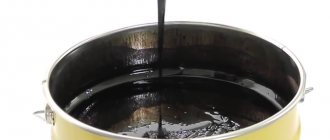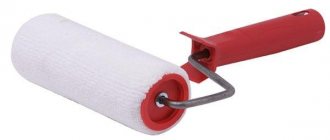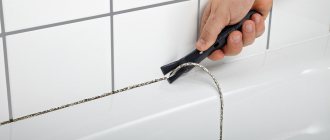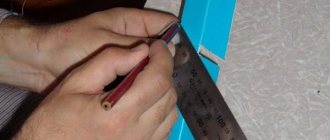Welding is a long-known method of fastening metal structures. It has many advantages, but there are also disadvantages, such that they can easily ruin all the work done previously. To minimize the impact of these shortcomings, various methods of protecting metal structures are used. Among them is weld processing. It is discussed further below.
Basic methods
Treatment of welds after welding is necessary to increase their strength properties and protect them from premature destruction. Compounds are processed in different ways, the most common of which are:
- thermal _ Allows you to eliminate residual stresses that arise during the welding process. It is carried out by general heating, when the entire part is subject to temperature treatment, or local heating, when only the connecting joint is heated or cooled;
- mechanical. This is a kind of cleaning of welded seams, during which scale and slag residues are removed from the surface of the seam joints, and their reliability is also checked;
- chemical _ The essence of the method is to apply special compounds to the seams in order to degrease the surface, prevent the formation of corrosion centers and create a protective layer. As a rule, chemical treatment of welds is used for materials whose operation will occur in active environments. The most accessible and frequently used option is to treat the compounds with paint and varnish primer mixtures.
It is difficult to say which method is better. The choice of a specific method should be guided by the operating conditions of the metal products, as well as the technical requirements for the design. Quite often, all three technologies are used sequentially.
What to do if you catch bunnies: first aid
Know! Since eye burns from welding always occur in industries where there is no doctor, in such situations it is first necessary to provide the victim with emergency assistance, which consists of the following:
- be rinsed with running cold water for several minutes to eliminate painful sensations.
- If the burn is accompanied by electrode particles , they must be removed with the corner of a folded napkin or a clean handkerchief.
- It is advisable to apply compresses soaked in antiseptic ointment to your eyes , if you have one in your medicine cabinet.
- If you experience severe pain, you can take painkillers orally.
If you have ice on hand, you can apply pieces of it to the victim’s closed eyelids.
Remember! In the process of providing first aid, it is necessary to call an ambulance or, if possible, independently deliver the victim to the nearest clinic.
Heat treatment
Heat treatment of welded joints is considered a mandatory stage in the welding process of thin-walled products, especially those that are subject to deformation as a result of internal stresses.
Such products include a variety of containers, pipelines, pressure vessels, chemical and nuclear reactor vessels and other critical objects. The technology is based on heating and subsequent cooling of the welded part according to a strictly specified temperature schedule.
What problems does it solve?
During the welding process, only a small area of the joined elements is exposed to heat. Due to uneven heating, internal stresses arise in the seams, which are a significant reason for the deformation of parts and even their complete destruction. Also, in places where the metal is heated unevenly, the structure of its crystal lattice changes, which ultimately worsens the chemical and physical-mechanical characteristics.
Heat treatment of welded joints reduces the stress generated inside the welds and also allows:
- make the structure of the weld and heat-affected areas homogeneous and more resistant to external influences;
- improve the operational and physical properties of the metal: increase heat resistance and corrosion resistance, normalize ductility.
Heat treatment of welds restores the properties and structure of the metal and makes it possible to bring technical indicators to design solutions.
How does heat treatment work?
Heat treatment is carried out after welding at high temperatures varying between 600-1000°C.
The processing process occurs in the following order:
- The seam itself and the areas surrounding it on both sides heat up.
- In a heated state, the structure is maintained for a certain period depending on the method used.
- The part is cooled in accordance with the processing schedule.
For structures with different configurations and thicknesses, welding seams are processed in different ways, each of which has its own distinctive features.
Types of heat treatment
In practice, heat treatment of connecting joints obtained during welding is carried out in different ways. The table below lists the methods used and their features.
| Type of processing | Process Features |
| Preheat | The metal is heated to a temperature of 150-200 degrees. Used when joining parts made of low-carbon steel before welding and directly during welding |
| High holiday | Depending on the type of steel, the heating temperature is 650-750°C. After reaching the desired temperature for 5 hours, the mode is maintained at the same level. After treatment, the elasticity of the seam joint increases significantly, resistance to external loads increases, and stress decreases by up to 80%. |
| Normalization | This type of processing is performed at temperatures ranging from 950° and above. When heated to the required levels, a holding period occurs, after which the product is cooled under ambient conditions. The technique is used for products made of low-alloy and carbon steel grades. After the procedure, the tension decreases, the grain size of the material decreases, and the strength of the joint increases |
| Austenization | The method is based on hardening the joint seam by heating it to 1070° or more. It is necessary to warm up the joint for an hour, after which it is quickly cooled artificially. This method is used to perform heat treatment of welded seams of pipelines and other products made of austenitic steels in order to increase the elasticity of the joint. |
| Stabilization | With this type of annealing, the temperature is much lower compared to austenitization and the metal holding time is also shorter. |
| Thermal rest | Warming up to 250-300°C implies thermal relaxation of welded joints, when it is performed in the seam, the stress and level of diffuse hydrogen decrease |
Equipment selection
The joints obtained by welding are processed in several ways, for each of which a separate installation is used for heat treatment of welds:
- induction. Here you will need a high-frequency alternating current generator with sufficient power. An inductive coil wound over the treated area acts as a heating device;
- radiation _ It is performed by infrared radiation emanating from a heated nichrome wire. Electric current from powerful sources is passed through the wire. The technique can be used for materials with insignificant electromagnetic properties;
- gas _ In terms of energy consumption, the most economical method. Heating is carried out with a special burner, and it is important to correctly form the flame so that the area heats up evenly.
When choosing a suitable method, it is necessary to take into account the characteristics of the material, the thickness of the products, what problems the processing must solve and the economic factor.
Warm-up temperature control
Regardless of whether general or local heat treatment of the welded seam of pipes, containers or other products is carried out, in each case it is necessary to control the heating temperature. For this use:
- thermal paint and thermal pencil . These are chemical compounds that are applied to the joint and change color when the temperature changes;
- pyrometers and thermal imagers are electronic devices that operate remotely.
Thermal pencils and paints require continuous visual monitoring, and if temperature parameters deviate from acceptable values, surgical intervention is required. Thermal imagers and pyrometers are more accurate devices and can be integrated into an automatic system that maintains a stable temperature.
Pros and cons of heat treatment
The advantages of thermal treatment of connecting joints of metal products include:
- restoration of ductility and strength of the material;
- reduction of internal stresses;
- ensuring the durability of joints and the reliability of the entire structure.
Among the disadvantages are noted:
- increased requirements for the qualifications of specialists;
- the need for large and expensive equipment;
- if even minor errors are made, the processes are irreversible and it is impossible to correct the flaws;
- high energy costs.
Although there are shortcomings, if you follow the schedule and perform all the steps correctly, you can significantly improve the technical characteristics of the seams.
Areas of application
As a rule, improvement of seams by thermal methods is carried out in structures with increased operational requirements. This can be heat treatment of welded joints of process pipelines subjected to high loads of machine tools and mechanisms, and other structures operating in difficult conditions.
When carrying out body repair work, the treatment of car welding seams is often used by heating them to the required temperature.
Small products are heated in muffle furnaces. Larger structures are usually heated by induction or gas methods, in some cases by radiation. Corrosion protection of welds should be carried out as soon as possible after completion of the welding process.
Safety precautions
Before starting work on cleaning welding joints on stainless steel, you must make sure that the workplace and special clothing are ready. Be sure to check the equipment. You can begin work only with all the protective equipment necessary for a welder.
Periodically, the employee is required to undergo training and instructions on compliance with fire safety rules. Information about briefings is displayed in the work log under the employee’s signature.
Primary requirements:
- You cannot be distracted while processing welding seams;
- There should be no flammable objects in the room;
- Effective ventilation;
- The equipment can only be moved after the power supply has been turned off;
- Only serviceable equipment may be used;
- When carrying out a chemical or electrochemical method, it is necessary to ensure proper disposal of the products.
Mechanical restoration
Cleaning welds after welding mechanically is carried out using various devices, the simplest of which is a wire brush. There are other ways that not only make the task much easier, but also clean the joints much better. For example, using a grinder with a special petal attachment or an abrasive wheel, or a portable grinding device.
Although at first glance cleaning welding seams seems quite simple, there are some rules, the knowledge and observance of which directly determines the quality and efficiency of the work:
- When cleaning welds after welding with a grinder is carried out, then when choosing a grinding wheel you need to take into account the material from which it is made. In this case, it is better to use an aluminum zirconate circle;
- The petals of the circle should be chosen on a fabric basis. Although the cost of such devices is higher, it is fully justified by the end result and pays off due to less consumption of grinding wheels;
- The size of the abrasive grain matters and it must be selected taking into account the tasks at hand. Often, cleaning a weld seam is performed with several nozzles with different grain sizes. Coarse-grained ones are used to remove large scales, and for finishing penetration you will need a nozzle with the finest grains. They need to be changed in a certain sequence from larger to smaller sizes;
- If you have to clean up the weld after welding in places with limited access, for example, in holes, edges or cavities, then you need to use burrs. These are special devices of different shapes and sizes that are installed in the grinding machine.
Mechanical processing is very often carried out on car welded seams, eliminating slag, scale, oxide film, burrs, splashes of frozen metal and other defects that have formed on the connecting joints and affect the quality and strength of the joint.
When painting weld seams after welding is to be done, eliminating defects mechanically is considered a mandatory step before applying paints and varnishes.
Symptom Signs
Signs of burns (or “bunnies”) are:
- sensation of the presence of a foreign body or sand under the eyelids in the eyes;
- feeling of itching, burning and irritation;
- for minor burns – discomfort similar to symptoms of eye fatigue;
- headaches that worsen with eye movement;
- the appearance of spots of light before the eyes .
With such symptoms, the victim must provide first aid and consult an ophthalmologist, who will determine the severity of the lesion and prescribe appropriate treatment if necessary.
Chemical treatment
Cleaning weld seams after welding will be much more efficient and of better quality if mechanical devices are combined with chemical agents. In this regard, two methods are considered the most popular and effective: etching and passivation.
Etching
This is the stage of processing joints, which must be performed before mechanical grinding. It is carried out using chemical compounds that form uniform and durable anti-corrosion coatings on the surfaces of parts. In addition, the etching method removes areas affected by tarnish, in which rust promoters accumulate, for example, oxidized nickel and chromium.
When small areas are to be cleaned, the solutions are applied directly to the surface of the joints. Large parts with complex configurations are placed in containers filled with an etching solution. Depending on the type of metal, the time of chemical exposure is determined individually.
Passivation
This is the cleaning of seams after welding by treating metal surfaces with special compounds that form a protective film that is passive to corrosive formations. The chemical process occurs as follows. When interacting with a metal surface, mild oxidants remove free metal from it, thereby forming a protective film.
After completing the process, be sure to wash off the reagents used with water. Since after such a rinse the water contains many heavy metals and acids, therefore, in order to prevent negative impacts on the environment, the waste liquid must be disposed of.
In order for the chemical cleaning of welds after welding to be correct and safe, the standards provide for the neutralization of acids with special alkaline compounds, after which the solution should be filtered and disposed of in accordance with the requirements of natural legislation.
Possible consequences
In case of serious welding burns and lack of adequate treatment and first aid, the following complications may develop:
- disruption of the shape of the lens and cornea , which leads to astigmatism;
- irreversible corneal opacities;
- corneal erosions and ulcerations;
- decreased visual acuity;
- with severe burns of the cornea - complete loss of vision .
Features of processing stainless steel after welding
Stainless steel products are used in various areas of life: in the automotive industry, in the production of pipelines and containers for aggressive liquids, and many other structures. In everyday life, heated towel rails, racks, ramps, railings, kitchen and other accessories made of stainless steel are very popular.
Quite often, by welding stainless steel elements, craftsmen make all possible structures at home. But in order to achieve maximum strength of butt joints and obtain durable products, you should know how and with what to treat the weld seam against corrosion.
If this is not done, then scale will quickly form at the joints, which will only increase over time, causing the destruction of the joints.
Mechanical grinding
The weld areas are significantly weakened by the oxide layer formed during welding. To remove it, the weld seams are polished, which also eliminates unevenness and unsightly color transitions.
Grinding is carried out using a grinder equipped with special grinding wheels. But before you clean the welds, you should understand that not all circles are suitable for such work.
To prevent dark overheated areas and rough grooves from abrasive from remaining on the product, it is better to use petal wheels. The cleaning process itself will take longer, but the effect will be much better.
Polishing
An important step in processing joints on stainless steel is polishing. It is necessary to give surfaces final shine, evenness and resistance to aggressive external influences.
How is the process performed and how to clean the weld seam? First, the joints are treated with a disc containing a rubber-like vulcanite material installed in a drill. This gives the joints the required shape and depth; the material itself has a soft effect on the stainless steel.
Next, a polishing paste, for example, a diamond compound or a regular GOI mixture, is applied to the sanded areas. Using a felt circle, spread the paste over the entire surface. If you need to polish corner joints, it is better to use small circles.
After treatment, there are no matte spots on the surfaces, it turns out shiny and mirror-like.
Other criteria for classification of welded joints
In addition to the method of joining parts, seams differ in other parameters:
- According to the shape of the seam, convex and flat seams are distinguished,
- There are continuous and intermittent seams along the length,
- According to the position of the welded surfaces in space, there are horizontal, vertical, ceiling and bottom seams and other classifications.
Before starting work, it is important to determine the type of weld in all respects. This will help you choose the optimal welding technique in each specific case. For example, welding a fillet joint in a vertical position will require more preparation than welding a butt weld in a down position.
Methods for processing welds on a car
Today, one of the most effective and simplest methods of fastening metal elements is welding. The technology is also actively used in car body repairs.
The service life of the body cannot be called eternal. After 10-15 years of operation, cracks, corrosion formations and other defects appear on the body. Repairs are also inevitable after an accident.
Many car owners, in an effort to reduce repair costs, decide to carry out welding work themselves. At the same time, not everyone knows how to treat welding seams on a car.
The weld itself is considered a weak point, and therefore requires additional protection from premature destruction. There are different options and means for treating car welds:
- If welding is performed in an easily accessible place, then automotive seam sealant can be applied to the finished seam. It is better to coat in several layers alternately, leveling the mixture with a spatula;
- When the joint is located on a hard-to-reach internal surface, pneumatic preservative sprayers are suitable for treatment. These are devices consisting of a long plastic tube, a tank for pouring a preservative solution into it, and a pneumatic compressor.
These are the simplest methods for protecting connecting joints. To prepare surfaces for painting and prevent corrosion processes, other methods are also used - mechanical grinding, chemical etching and neutralization. The quality of the welding process and the correct processing of the joints directly determine whether the weld seam will rot under the paint.
Rules for high-quality welding and seam processing
If you look at it, welding and processing seam joints during body repair is not particularly difficult. Here it is only important to follow the welding technology and the procedure for stripping the resulting joints:
- It is better to weld metal using a spot technique, the length of the seams is about one centimeter. If the molten metal spatters a lot, it means that the surface of the parts was poorly cleaned before welding. To avoid overheating when making long seams, sections from different sides should be welded alternately;
- When the joint is made and has cooled down, it must be cleaned using a wire brush or grinder with properly selected attachments. At this stage, irregularities, burrs, bumps from frozen metal splashes and other defects are removed from the joint;
- the next stage is the application of epoxy primers. This is necessary in order to prevent oxidation of metal surfaces. Epoxy mixtures have a sufficient structure and provide a reliable protective coating against moisture and air getting on the metal. If there are traces of rust on the joint, then it should be additionally treated with acidic primer.
The applied primer must dry thoroughly, so you need to wait at least a day. Once dry, you can lightly sand the surface to roughen it using 120- or 240-grit sandpaper. The next steps are applying putty and painting.
Note! The soil must dry naturally; the process cannot be accelerated by using a hairdryer. This way, only the top layer will dry, forming a crust under which nothing will dry out.
Gels and acids
To eliminate color transitions and oxide deposits that occur during welding, acid treatment of the metal with gels and acids is used. The procedure occurs in the following order:
- the welded product is cooled to a temperature of 50°C;
- seam joints are thoroughly cleaned of scale and dirt with a wire brush;
- the pre-prepared composition is applied to the junction and left for 30 minutes;
- chemicals are thoroughly washed off with plenty of water.
Some chemicals are characterized by an increased fire hazard, so strict adherence to safety precautions is necessary.
Heat treatment of welding seams is also possible, but this technology is usually used in professional car services and with the use of specialized equipment.
Using eye drops
For the first three degrees of electrophthalmia, ophthalmic instillation solutions can be prescribed for treatment:
- vasoconstrictor and anti-inflammatory drugs Visoptin and Vizin, which are instilled three times a day, but not longer than three days;
- anti-inflammatory drugs indomethacin and nimesil - such drugs help relieve pain and reduce inflammation;
- antibiotic drops (tobramycin, gentamicin), which promote disinfection and enhance the regenerative properties of affected tissues (for a week, such drops are used six times a day, one drop in each eye);
- anesthetics (tetracaine, lidocaine), which quickly relieve pain and irritation.
Such drugs can only be prescribed by a specialist after examining the victim’s eyes and assessing the severity of the burns.
Sealant application technology
The use of sealant for a car has certain requirements. You need to know the operating rules described below:
- First, the base must be cleaned of all types of contaminants, including removing rust and degreasing the base;
- To increase the degree of adhesion, stripping is carried out with red Scotch Brite;
- A primer solution for metal surfaces is applied when such a step is indicated in the instructions for the sealant;
- Prepare the composition, place the tube in the gun, open the tape, or prepare a brush or spatula for applying the product;
- The product is distributed at the same speed and preferably in one go, so that the seam comes out optimally even.
The excess part of the layer is removed immediately with a spatula or simply with a gloved finger. If the layer is excessively sticky, sprinkling with water will reduce the problem. The layer can be painted after the time indicated on the packaging.
The product is distributed at the same speed and preferably in one go, so that the seam comes out optimally even.
